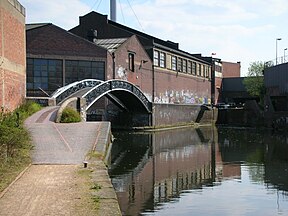Bordesley Junction
| Bordesley Junction | ||||||||||||||||||||||||||||||||||||||||||||||||||||||||||||||||||||||||||||||||||||||||||||||||||||||||||||||||||||||||||||||||||||||||||||||||||
|---|---|---|---|---|---|---|---|---|---|---|---|---|---|---|---|---|---|---|---|---|---|---|---|---|---|---|---|---|---|---|---|---|---|---|---|---|---|---|---|---|---|---|---|---|---|---|---|---|---|---|---|---|---|---|---|---|---|---|---|---|---|---|---|---|---|---|---|---|---|---|---|---|---|---|---|---|---|---|---|---|---|---|---|---|---|---|---|---|---|---|---|---|---|---|---|---|---|---|---|---|---|---|---|---|---|---|---|---|---|---|---|---|---|---|---|---|---|---|---|---|---|---|---|---|---|---|---|---|---|---|---|---|---|---|---|---|---|---|---|---|---|---|---|---|---|---|
|
||||||||||||||||||||||||||||||||||||||||||||||||||||||||||||||||||||||||||||||||||||||||||||||||||||||||||||||||||||||||||||||||||||||||||||||||||
Bordesley Junction (grid reference SP084864) is a canal junction where the Grand Union Canal splits near to Bordesley, Birmingham, England. It opened in 1844, when the Birmingham and Warwick Junction Canal was built as part of a scheme to bypass the congestion at the Farmers Bridge flight of locks.
The Grand Union Canal was formed in 1929, with the amalgamation of eight canal companies. The route through Bordesley was originally constructed by the Warwick and Birmingham Canal, which linked up with the Digbeth Branch of the Birmingham Canal Navigations a short distance to the north-west of the junction site. The Warwick and Birmingham Canal was authorised by an Act of Parliament obtained in 1793, and officially opened on 19 December 1799, as did the Warwick and Napton Canal, which provided a link from its southern end to Napton Junction on the Oxford Canal. They may have been incomplete at the time, as the first real traffic was on 19 March 1800. The Digbeth Branch was built in 1799, using powers that had been contained in the Birmingham Canal's Act of 1768.
Congestion on the Farmer's Bridge flight of locks had been a problem since 1793, and had been compounded by the opening of the Warwick and Birmingham Canal, which provided the main link between the Birmingham canals and the route to London. Improvements to the Birmingham Canal's main line, completed in 1829, and the opening of the Birmingham and Liverpool Junction Canal in 1835, which brought traffic into the Birmingham system from the north west, meant that a solution to the congestion was urgently required, and an Act was obtained in 1839 to authorise the Tame Valley Canal. At the same time, the idea of a line from Salford Junction to Camp Hill Locks, which had been proposed in 1830, was revived. The Tame Valley obtained a second Act, and the Birmingham and Warwick Junction Canal obtained its Act on the same day in 1840. Six locks (including a stop lock) were built between Salford Junction and the new junction at Bordesley, and the canal and junction opened on 14 February 1844, as did the Tame Valley Canal.
...
Wikipedia

